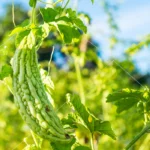Keeping Your Plants Happy and Hydrated
Properly watering your plants is essential for their health and overall growth. Water helps transport nutrients from the soil to the roots, and it also helps regulate the plant’s temperature. Here are some tips for keeping your plants happy and hydrated:
Importance of Properly Watering Your Plants
Watering is essential for your plants to grow and survive, but overwatering can lead to root rot, which can be fatal. On the other hand, underwatering can cause your plants to wilt and dry out. It’s important to find the right balance between these two extremes to keep your plants healthy.
How Watering Affects Your Plant’s Health
Watering affects your plant’s health in several ways. For example, overwatering can cause the roots to rot and reduce the plant’s ability to absorb water and nutrients. Underwatering, on the other hand, can cause the soil to become too dry and make it difficult for the roots to absorb water.
To ensure your plant’s health, it’s crucial to water them according to their specific needs. Some plants require more water than others, and the amount of water they need can vary depending on the season, temperature, and humidity.
When watering your plants, make sure to water the soil and not the leaves. Watering the leaves can cause them to become waterlogged and increase the risk of fungal diseases.
It’s also important to water the soil directly, rather than the plant leaves. Watering the leaves can increase the risk of diseases and fungal infections, and can also cause damage or scorching if the sun is shining directly on the plant.
Understanding Your Plants’ Water Needs
Watering your plants properly involves understanding their specific water needs. Some plants require more water than others, and factors such as the plant species, size, stage of growth, and environment can all impact how much water they need.
a. How to Determine Your Plants’ Water Needs
One way to determine your plants’ water needs is to research the specific requirements of each plant species in your garden. This information can usually be found on the plant tag or in gardening guides. In general, most plants prefer to be kept consistently moist but not waterlogged.
b. Factors Affecting Water Needs
Several factors can affect your plants’ water needs, including:
- Temperature: Higher temperatures and low humidity levels can cause plants to lose moisture quickly and require more frequent watering.
- Soil Type: Different types of soil can hold varying amounts of moisture. For example, clay soils tend to retain more water than sandy soils.
- Plant Size: Larger plants generally require more water than smaller ones.
- Stage of Growth: Plants have different water requirements during different stages of growth. For example, young seedlings need more frequent watering than mature plants.
- Environment: Outdoor plants may require more water during hot and dry periods, while indoor plants may need less water during the winter when heating systems dry out the air.
c. How to Read Your Plant’s Signs of Thirst
Observing your plants closely can also help you determine their water needs. Signs that your plants may be thirsty include:
- Wilting leaves: Leaves that are droopy or wilted may indicate that your plants need water.
- Yellowing leaves: Yellow leaves can be a sign of both overwatering and underwatering. However, if the yellow leaves are accompanied by soggy soil, the plant is likely overwatered. If the leaves are dry and brittle, the plant may be underwatered.
- Brown leaf tips: Brown leaf tips can be a sign of underwatering, especially if the soil is dry.
d. Signs of Underwatering and Overwatering
Both underwatering and overwatering can have negative effects on plant health.
Effects on Plant Health
Underwatering can cause plants to wilt, yellow, and eventually die. When plants don’t get enough water, they can’t perform basic functions such as photosynthesis and nutrient absorption. Overwatering, on the other hand, can lead to root rot, which can be fatal to plants. Overwatered plants may also show signs of yellowing leaves and a weakened root system.
How to Identify Underwatering and Overwatering
Signs of underwatering include dry soil, wilted leaves, and yellowing or brown leaf tips. Signs of overwatering include soggy soil, yellowing leaves, and a weak root system. In some cases, overwatering can also cause fungal growth or a foul odor in the soil. It’s important to check the soil moisture regularly and adjust your watering habits accordingly to prevent both underwatering and overwatering.
Factors Affecting Your Plants’ Water Needs:
Type of Plant:
Different plants have unique watering needs. For example, some plants such as succulents and cacti store water in their leaves and stems, so they require less frequent watering. On the other hand, plants such as ferns and tropical plants prefer more frequent watering as they require moist soil. It is important to research the specific watering needs of each plant you have to ensure that they receive the appropriate amount of water.
Soil Type:
Soil composition can affect water retention and drainage, which in turn affects plant growth and health. Sandy soils drain quickly, so they require more frequent watering, while clay soils retain moisture longer, so they require less frequent watering. Understanding the soil type in your garden can help you determine how frequently to water your plants.
Temperature and Humidity:
Temperature and humidity affect water needs, with higher temperatures and lower humidity leading to an increased need for watering. In hot and dry climates, it is important to water your plants more frequently to ensure they have enough moisture to survive. During cooler and more humid periods, you may not need to water your plants as frequently.
Plant Size and Stage of Growth:
The size and growth stage of your plants can also affect their water needs. Young and small plants require less water than mature and larger plants. Plants in their growth stage also require more water as they are actively growing and developing. Adjusting watering frequency based on the growth stage of your plants can help ensure that they are receiving the appropriate amount of water.
Understanding the factors that affect your plants’ water needs is essential for proper plant care. By taking into account the type of plant, soil type, temperature and humidity, as well as the plant size and growth stage, you can determine how frequently to water your plants to promote their health and growth.
How to Water Your Plants
Watering your plants properly is essential for their growth and survival. Here are some tips for watering your plants:
Watering Techniques:
Different plants require different watering techniques. For instance, plants with shallow roots like lettuce and herbs require frequent watering with less water, while plants with deep roots like tomatoes and cucumbers need less frequent watering with more water.
Here are some common watering techniques:
- Top watering: This method involves watering the plants from the top using a watering can or hose. It is best for plants that prefer a consistent supply of moisture.
- Bottom watering: This method involves soaking the plants’ roots by placing them in a tray of water. It is best for plants that like to stay moist, like ferns and orchids.
- Drip irrigation: This is a system of pipes and hoses that drip water slowly and directly to the plants’ roots. It is ideal for large gardens and can help conserve water.
Best Practices for Watering Indoor and Outdoor Plants:
When watering your plants, keep in mind the frequency and timing of watering, and avoid common watering mistakes.
- Frequency and Timing of Watering: The frequency of watering your plants depends on various factors like the type of plant, the soil type, temperature and humidity, and the plant’s growth stage. A general rule of thumb is to water your plants when the soil is dry to touch. Avoid overwatering your plants as it can lead to root rot and other issues.
- Avoiding Common Watering Mistakes: Overwatering, underwatering, and watering at the wrong time of day are some of the common watering mistakes that people make. To avoid overwatering, make sure the soil is well-drained, and the water can escape from the bottom of the container. To avoid underwatering, check your plants regularly for signs of thirst, like drooping leaves. Avoid watering your plants during the hottest part of the day as the water can evaporate quickly, and the plants can get burned.
Watering your plants properly is critical to their growth and health. By understanding your plants’ water needs, factors affecting their water requirements, and best practices for watering, you can keep your plants happy and hydrated, whether indoors or outdoors.
Top of Form
Tools and Techniques for Watering Plants
Watering your plants is an essential part of plant care, and having the right tools and techniques can make the job easier and more effective. Here are some tools and techniques you can use for watering your plants:
- Watering Cans: When choosing a watering can, consider the size and weight, material, and design. A watering can with a long spout is ideal for reaching plants in tight spaces, while a large watering can is suitable for watering large plants or multiple plants at once. Plastic watering cans are lightweight and affordable, while metal watering cans are more durable but heavier. Proper use and maintenance of your watering can can help it last longer.
- Garden Hoses: There are different types of hoses and nozzles available for watering your plants. A rubber hose is more durable and can withstand higher water pressure, while a vinyl hose is lighter and more affordable. A nozzle with different spray patterns can help you adjust the water flow depending on the plant’s needs. To avoid wasting water, turn off the hose when not in use and check for leaks regularly.
- Drip Irrigation Systems: Drip irrigation delivers water directly to the plant’s roots, minimizing water loss through evaporation and reducing the risk of overwatering. This method is ideal for plants that need consistent moisture, such as vegetables, herbs, and container plants. While a bit more expensive than other watering methods, drip irrigation can save water and time in the long run.
- Sprinklers: Sprinklers distribute water over a large area, making them ideal for watering lawns or large garden beds. There are different types of sprinklers available, such as oscillating, pulsating, and rotary, each with its own advantages and disadvantages. To use a sprinkler effectively, adjust the water pressure and coverage area according to your plants’ needs.
- Self-Watering Systems: Self-watering systems are ideal for busy gardeners or for plants that need consistent moisture. These systems include pots with a built-in reservoir, watering spikes, or wick systems that draw water up from a separate reservoir. While convenient, it’s important to monitor these systems to ensure they’re working properly and adjust the watering frequency as needed.
Using the right tools and techniques for watering your plants can help you save time, water, and money in the long run. Choose the method that works best for your plants and your lifestyle, and remember to adjust your watering practices based on your plants’ needs and environmental factors.
How to Check if Your Plants Need Watering
Checking soil moisture is an essential step in determining when to water your plants.
There are various techniques for checking soil moisture levels, including:
- Finger Test: Insert your finger into the soil about an inch deep. If the soil feels dry, it’s time to water.
- Moisture Meter: A moisture meter is a tool that measures the moisture level in the soil. Simply insert the probe into the soil, and the meter will give you a reading.
- Weight Test: Pick up the container your plant is in and feel its weight. If it feels light, it may need watering.
Apart from checking the soil moisture, there are other signs that indicate that your plants are thirsty. For example, wilted leaves, yellowing, or brown tips on the leaves, and a general lack of growth may indicate that your plant needs water.
It’s crucial to adjust your watering based on the soil and plant needs. For instance, if the soil is sandy, it will drain faster and require more frequent watering than soil with higher clay content. Similarly, a plant in a small container may need watering more frequently than one in a larger container.
Regularly checking the soil moisture level and paying attention to your plant’s signs of thirst can help ensure that you are watering your plants correctly. Adjusting your watering schedule based on soil and plant needs can also help prevent overwatering or underwatering.
Using Mulch and Other Techniques to Retain Moisture
In hot and dry climates like India, it can be challenging to maintain adequate moisture for plants. One solution is to use mulch, which is a layer of material applied on top of the soil. Mulch helps to retain moisture in the soil by reducing evaporation and regulating soil temperature.
There are different types of mulch available in India, such as straw, hay, wood chips, leaves, and even grass clippings. Organic mulch can also improve soil health as it decomposes over time. Some common benefits of using mulch are weed suppression, erosion control, and improved soil structure.
To apply mulch, spread it evenly over the soil surface, making sure not to cover the plant’s stem or leaves. Mulch should be maintained at a depth of around 2-3 inches to provide the best results. It’s important to regularly check the moisture level in the soil and adjust the watering accordingly, as the mulch may reduce the need for frequent watering.
Other techniques to maintain and retain moisture include using watering spikes or globes, which slowly release water into the soil as the plant needs it. Additionally, grouping plants with similar water needs together can help to create a more efficient watering routine.
Using mulch and other moisture-retaining techniques can help to reduce the frequency of watering while still providing adequate moisture for healthy plant growth, especially in hot and dry climates like India.
Conclusion with a Recap of Important Points and Some Final Recommendations
In conclusion, watering your plants properly is essential for their growth and health. Remember that each plant has unique water requirements based on factors such as the type of plant, soil type, temperature, humidity, and growth stage. Signs of underwatering and overwatering can help you adjust your watering frequency and techniques.
To ensure that you are watering your plants correctly, it is important to use the right tools and techniques. Choose a watering can, garden hose, drip irrigation system, sprinkler, or self-watering system that suits your plant’s needs and your watering style. Don’t forget to check the soil moisture regularly and use techniques such as mulching to help retain moisture.
In summary, here are some important points to keep in mind:
- Understand your plant’s water needs based on their type, soil, temperature, humidity, and growth stage.
- Learn how to read your plant’s signs of thirst and adjust your watering frequency accordingly.
- Use the right tools and techniques, such as watering cans, garden hoses, drip irrigation systems, sprinklers, or self-watering systems, to water your plants effectively.
- Check the soil moisture regularly and use techniques such as mulching to retain moisture.
- Avoid common watering mistakes, such as overwatering or underwatering.
For best practices, products and usage techniques, you can always visit our website at www.shehrikisaan.com and browse through our complete range of products. We hope this article helps you become a more confident and successful plant parent!
Table Of Contents:
- Keeping Your Plants Happy and Hydrated
- Importance of Properly Watering Your Plants
- How Watering Affects Your Plant’s Health
- Understanding Your Plants’ Water Needs
- How to Determine Your Plants’ Water Needs
- Factors Affecting Water Needs
- How to Read Your Plant’s Signs of Thirst
- Signs of Underwatering and Overwatering
- Effects on Plant Health
- How to Identify Underwatering and Overwatering
- How to Determine Your Plants’ Water Needs
- Factors Affecting Your Plants’ Water Needs
- Type of Plant
- Different Watering Needs for Different Plants
- Examples of Plants with Unique Watering Needs
- Soil Type
- Understanding Soil Composition
- How Soil Affects Water Retention and Drainage
- Temperature and Humidity
- How Heat and Humidity Affect Water Needs
- Tips for Watering in Hot and Dry Climates
- Plant Size and Stage of Growth
- How Plant Size and Age Affect Water Needs
- Adjusting Watering Frequency Based on Growth Stages
- Type of Plant
- How to Water Your Plants
- Watering Techniques
- Different Methods for Different Plants
- Tips for Consistent Watering
- Best Practices for Watering Indoor and Outdoor Plants
- Frequency and Timing of Watering
- Avoiding Common Watering Mistakes
- Watering Techniques
- Tools and Techniques for Watering Plants
- Watering Cans
- Choosing the Right Type of Watering Can
- Proper Use and Maintenance
- Garden Hoses
- Different Types of Hoses and Nozzles
- Best Practices for Watering with a Hose
- Drip Irrigation Systems
- How Drip Irrigation Works
- Advantages and Disadvantages
- Sprinklers
- Types of Sprinklers and How They Work
- Best Practices for Using Sprinklers
- Self-Watering Systems
- How Self-Watering Systems Work
- Examples of Different Types of Self-Watering Systems
- Watering Cans
- How to Check if Your Plants Need Watering
- Techniques for Checking Soil Moisture
- Signs of Thirst in Plants
- How to Adjust Watering Based on Soil and Plant Needs
- Using Mulch and Other Techniques to Retain Moisture
- Types of Mulch and Their Benefits
- How to Apply and Maintain Mulch
- Other Techniques to Maintain and Retain Moisture
- Conclusion
- Recap of Important Points
- Final Tips and Recommendations







